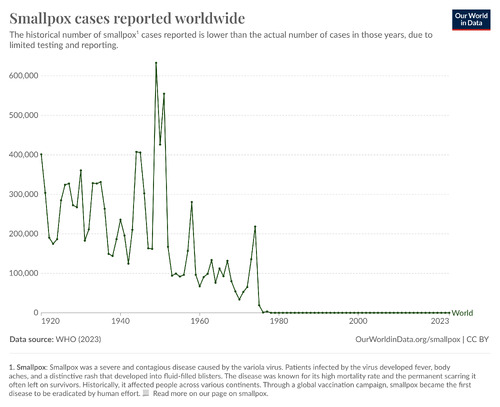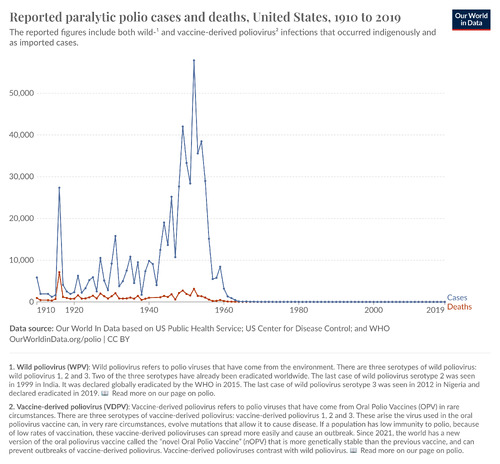Medicine
Despite the deep tension between the United States and the Soviet Union during the Cold War, the countries managed to put differences aside and cooperate when they shared a goal to battle diseases plaguing their citizens. The collaboration between the US and USSR proved in accomplishments that saved several lives and medicinal technology still utilized today. By rising above animosity, these countries were able to achieve far more than what would have been possible without collaboration.
Polio
Polio is characterized as a highly infectious disease that predominately affects children, causing paralysis, and can be fatal. This disease has been present long prior to the Cold War, yet in the mid twentieth century a cure was still yet to be innovated. In the mid twentieth century, there was a heightened urgency to combat this disease as there was an increase in epidemics.
In 1955, American scientist Jonas Salk created the first Polio vaccination that was made of inactive poliovirus. Albert Sabin, another American scientist, believed a different approach would result in a more effective vaccine. He believed creating a vaccine with the weakened virus was a better solution as it would provide lifelong immunity, and he also sought to create a vaccine intended to be administered orally. An oral vaccine would be more cost effective and easily administered to masses.
Concurrently, the prevalence of Polio in the Soviet Union was rising; Stalin's successors sought for aid internationally. Sabin embarked on a mission to the Soviet Unioni to work with their researchers and scientists to create the vaccine he believed to be superior.
Sabin worked with Soviet scientist Chumakov. Chumakov utilized his network to gain approval for large clinical trials of an oral vaccine, and it was administered to nearly 100 million people in the Soviet Union. Proving successful, the World Health Organization recognized the vaccines safety and efficacy a year later.
With Sabin's scientific knowledge and Chumakov's outreach, the two were able to successfully and efficiently create the vaccine Sabin hoped for.
Smallpox
Smallpox is another fatal disease with an estimated death toll of 300 million throughout history. During the Cold War, the USSR and United States joined forces and ultimately achieved eradication of the disease, the only case of eradication with regard to human disease.
The United States Center for Disease Control worked with the Institute of Virus Preparations of the Soviet Union, facilitated by the World Health Organization. Despite the ongoing conflict among these nations, the leading scientists put differences aside for their common goal of eradicating smallpox. With the leadership of the United States and the vaccines from the Soviet Union, the two nations came together and conquered a problem the two countries struggled to solve on their own.
The Soviet Union and the United States rose above political conflict and achieved eradication of small pox; one of only two diseases declared to be eradicated by the World Health Organization.

